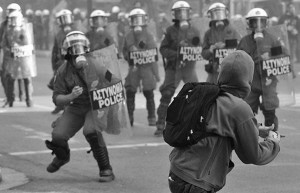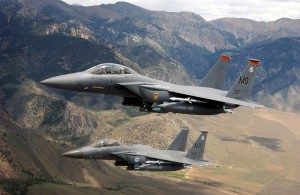Vulnerability
/ I've been sitting on this blog post for a while. It relates both to Sgt. Rory's workshop last weekend and the Tabby Cat push-hands debate, but it is more deeply about how and why I train.
I've been sitting on this blog post for a while. It relates both to Sgt. Rory's workshop last weekend and the Tabby Cat push-hands debate, but it is more deeply about how and why I train.We fight because we are vulnerable. A little kid can say he wants to kill me but I have no reason at all to fight until I'm vulnerable or someone I care about is vulnerable. It's a minimum requirement.
When animal predators attack they do so in ways that minimize their own vulnerability. When human predators attack they usually do the same thing. A victim may never have the chance to see their attacker, or may only see them as disarmingly charming and friendly in those seconds before the attack.
Here is how a lot of martial artists think: I have great structure. Once I have engaged with a threat I will avoid direct structural force against force contact with the threat until I have acquired a superior position. At that point I will unleash all of my force, weight and structure where the threat is most vulnerable.
Martial games like Mixed Martial Arts, Push-hands, or Boxing all function by limiting both competitor's vulnerabilities. The game then becomes: How can I create a situation where I can exploit a limited subset of my opponent's vulnerabilities before she can exploit mine. The goal is dominance, when that is achieved the game is over. Which is why it is relatively safe.
When we train games we are training to ignore some of our vulnerabilities. This explains why Tabby Cat was accused of ignoring the vulnerability of his head and why he countered that push-hands as a game ignores the extreme vulnerability created by close physical proximity, fixed positioning of the feet, and many other "rules."
To paraphrase the Tai Chi Classics: Because I understand my own vulnerabilities, I understand my opponent's as well. To the degree that my opponent does not understand his own vulnerabilities, I am totally free to act.
So a little re-framing is in order.
The history of warfare begins with attack and then run, followed shortly by attack from a distance with rocks and then run. The next step in evolution was fortification which protected vulnerabilities while simultaneously allowing for counter attack. This works great in the short term but in the long term people with time to plan will overcome your fortifications. The next step was mobile forts, namely tanks and airplanes. Then we got nukes and now we are back to fighting with our hearts and minds against terrorist insurgencies.
 It is very logical to begin martial arts training with simple attack, defend and escape ideas. Then to move on to structure training both as "fortification" and to improve power generation. Next one needs to understand how good structure is broken, so more power training along with targeting and angles--like siege warfare. After that it's important to make our forts mobile, and either tougher like tanks, or freer like airplanes. Whether by conditioning (tanks) or sensitivity (airplanes) we avoid metal (think: structure) against metal confrontation until we have maneuvered into the superior position.
It is very logical to begin martial arts training with simple attack, defend and escape ideas. Then to move on to structure training both as "fortification" and to improve power generation. Next one needs to understand how good structure is broken, so more power training along with targeting and angles--like siege warfare. After that it's important to make our forts mobile, and either tougher like tanks, or freer like airplanes. Whether by conditioning (tanks) or sensitivity (airplanes) we avoid metal (think: structure) against metal confrontation until we have maneuvered into the superior position.All fine and necessary. But in the end it still comes down to working with vulnerabilities. To really put vulnerability at the center of your training, to take it all the way--you need to get weaker. This is not a good strategy for a nation on the edge of survival. But for an already confident powerful nation it makes sense to train for attacks based on putting ourselves in the most vulnerable situations. That's what we are doing of course, planning for systematic terrorist attacks, biological, germ, computer, etc...
The most thorough way to learn about our vulnerabilities is to cultivate weakness.
What did I say? I said that martial artists usually train the best techniques, from the best positions, with the best possible structure. Fine. Go do that for as long as it takes you to see that no matter how good you get at it, your vulnerabilities still don't go away. Then start training without structure, from the worst possible positions, and with spacial awareness instead of technique.
The illusion that we have direct conscious control over our bodies is an enormous source of pain, aggression, and defensiveness. When that civilizing pretense is dropped, the body follows the spacial mind without inhibition.
